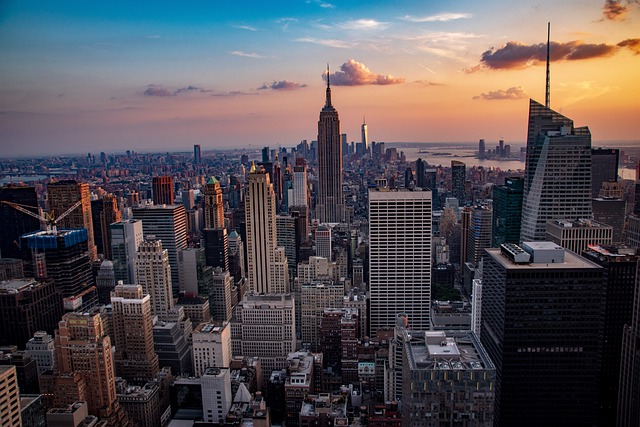The American Eagle and flag serve as powerful symbols of unity, patriotism, and shared history in the U.S., deeply ingrained in both culture and military ceremonies. Representing freedom, strength, courage, and sacrifice, these iconic emblems foster a sense of belonging and camaraderie among diverse communities during parades, wreath-laying ceremonies, and national events. Their historical significance stretches back to the Revolutionary War, inspiring troops and boosting morale through symbols of resilience and national pride.
“The American Eagle, a powerful symbol of national pride and military might, takes center stage during significant events. This article explores the strategic integration of the American Eagle and flag design in military and national ceremonies, highlighting their symbolic value and historical relevance. From majestic displays at parades to solemn remembrances on memorial day, these iconic symbols unite communities and pay homage to our heritage. Discover how customization options cater to large-scale events, ensuring a breathtaking visual impact that resonates with audiences.”
- Symbolism of the American Eagle: A National Icon
- The Power of Flag Design in Military Ceremonies
- Uniting Communities: Eagles and Flags at National Gatherings
- Historical Significance: Eagle and Flag Displays in Military History
- Customization and Production for Large-Scale Events
Symbolism of the American Eagle: A National Icon

The American Eagle holds immense symbolism in the United States, serving as a powerful national icon that represents freedom, strength, and justice. This majestic bird is intricately woven into the fabric of American culture and history, with its image gracing not only coins and seals but also flags, uniforms, and official emblems. The eagle’s majestic wingspan and keen eyesight symbolize the vast skies and vigilant protection that the nation envisions for its people.
As a symbol of unity and pride, the American Eagle is a ubiquitous presence at military and national events. Its appearance on flags and banners conveys a sense of strength and resilience, reminding citizens of the nation’s commitment to safeguarding democracy and individual liberties. The eagle’s symbolism resonates deeply with Americans, fostering a sense of patriotism and camaraderie during celebrations, ceremonies, and moments of unity across the nation.
The Power of Flag Design in Military Ceremonies

The American Eagle, a powerful symbol woven into the fabric of the nation’s history, takes on added significance in military ceremonies. The flag, with its bold red, white, and blue stripes and distinctive eagle silhouette, serves as more than just a piece of cloth; it becomes a tangible representation of courage, sacrifice, and unity. In these solemn events, the American Eagle design fosters a sense of pride and patriotism among participants and spectators alike.
During military ceremonies, the flag is often carried with great honor by veterans or specially designated individuals. Its majestic presence on parade floats, in wreath-laying ceremonies, or during renditions of “The Star-Spangled Banner” evokes deep emotional responses from those who have served or who cherish their country’s heritage. The American Eagle, a universal symbol of freedom and strength, becomes the focal point that binds the military community together, paying tribute to their shared values and the sacrifices made for the nation.
Uniting Communities: Eagles and Flags at National Gatherings

At national events, the sight of soaring American Eagles and waving flags becomes a powerful symbol of unity and patriotism. These majestic birds, often depicted on our nation’s symbols, represent freedom, strength, and resilience – values that resonate deeply with military personnel and civilians alike. When displayed together at gatherings like parades or ceremonies, they serve as a visual reminder of the shared history, traditions, and commitment to country.
The American Eagle and flag become a tapestry of collective identity, fostering a sense of belonging and camaraderie among communities. Their presence amplifies the emotional impact of events, creating an atmosphere that transcends individual experiences. This powerful imagery resonates in bustling crowds, uniting folks from diverse backgrounds under a common purpose – to honor the nation, celebrate shared values, and stand together as one united front.
Historical Significance: Eagle and Flag Displays in Military History

The American Eagle and flag have a profound historical significance in military contexts, serving as powerful symbols of strength and unity throughout history. From the earliest days of the Revolutionary War to modern-day conflicts, the eagle and flag displays have played a pivotal role in fostering patriotism and inspiring troops. These iconic imagery represent more than just a nation; they embody the spirit of freedom, courage, and sacrifice that has defined American military heritage.
In times of war, the sight of an American Eagle soaring high above the battlefield or flapping majestically atop a flagpole has been a source of comfort and resolve for soldiers. The flag, often carried by brave men and women into harm’s way, has become a universal sign of resilience and determination. Historical accounts reveal how these symbols boosted morale, united diverse troops under a common cause, and instilled a sense of pride in the nation they represented.
Customization and Production for Large-Scale Events

